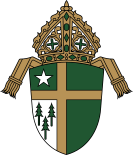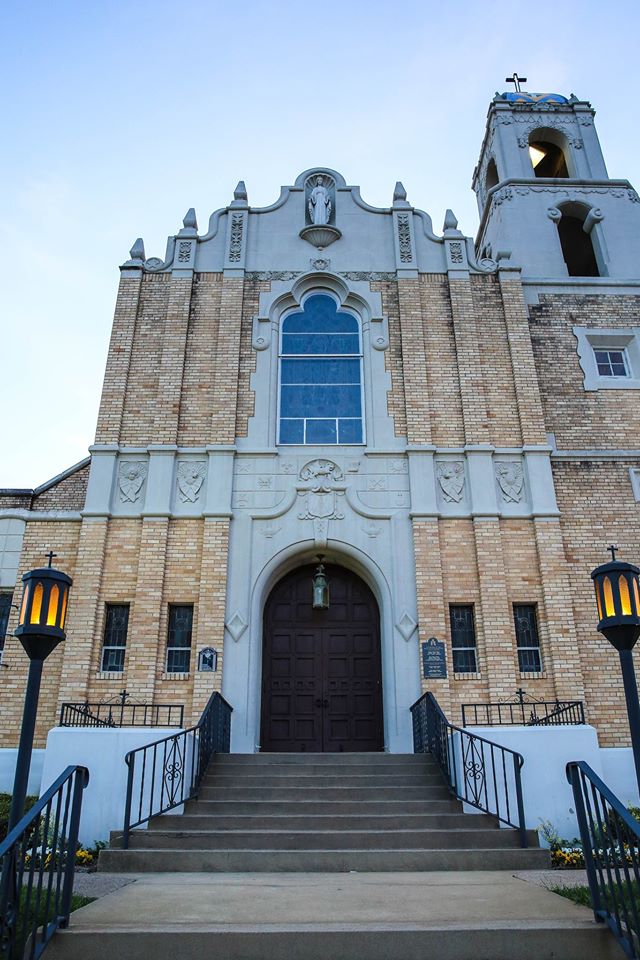Our Diocese
The Church of Jesus Christ in Northeast TexasThe Diocese of Tyler
The first Catholic mission in Texas, then part of the Spanish Empire, was San Francisco de los Tejas. It was founded by Franciscan Father Damián Massanet in 1690 in the Weches area (near Crockett). The priests left the mission after three years, then established a second mission, Nuestro Padre San Francisco de los Tejas near present day Alto in 1716.
In 1839, after the 1836 founding of the Texas Republic, Pope Gregory XVI erected the prefecture apostolic of Texas, covering its present day area. By the 1840’s, missionaries were visiting Clarksville and Nacogdoches. The prefecture was elevated to a vicariate apostolic in 1846, the year that Texas became an American state. On May 4, 1847, Pope Pius IX elevated the vicariate into the Diocese of Galveston. Marshall received its first missionary visit in 1853. The Tyler area would remain part of several Texas dioceses for the next 139 years.
Recognizing the growth of the East Texas region, the Diocese of Tyler was established on December 12, 1986, by Pope St. John Paul II. This move came as a response to the growing Catholic population and pastoral needs of the area. The new diocese was created out of territory from the dioceses of Dallas, Beaumont, and Galveston-Houston. On February 24, 1987, the diocese was formally erected when Father Charles E. Herzig of San Antonio was ordained as the first Bishop of Tyler and took canonical possession of the newly-elevated Cathedral of the Immaculate Conception in Tyler.
The diocese has grown from 25 parishes and 16 missions at its founding to 54 parishes and 14 missions today.
What is a Diocese?
A diocese is the local Catholic Church, a miniature of the Universal Church, and full expression of Roman Catholic Christianity in a given area. Though sometimes seen only in its administrative sense, the authentic Catholic understanding of a diocese is pastoral. It is the people who comprise the Catholic Church in a particular geographic area.
Also called the Particular Church, a diocese is defined in canon law as “a portion of the People of God, which is entrusted to a bishop to be nurtured by him, with the cooperation of the presbyterium [clergy] in such a way that, remaining close to its pastor and gathered by him through the Gospel and the Eucharist in the Holy Spirit, it constitutes a particular Church. In this Church, the one, holy, catholic, and apostolic Church of Christ truly exists and functions.”
Administratively, dioceses usually follow local boundaries such as counties, and they generally center on a prominent city within that territory. A diocese also is sometimes called a See, a term linked with the official seat of the bishop and referring to his territory or charge.
The background of dioceses is in the New Testament, where the apostles founded particular local churches, such as the Church at Ephesus, the Church at Rome, the Church at Corinth, and so on. Where once each church was headed by a bishop, the growth of Christianity led to the practice of one bishop heading a number of churches, such as village churches linked with the bishop of the nearby city.
Gradually, as the Church grew even more, the bishop’s area of leadership became known as a diocese, a term then used for the administrative county-like districts of the Roman empire. Today, the term is used not only in the Roman Catholic Church but in Eastern Orthodox Churches, Anglican/Episcopal Churches, some Lutheran Churches, and a few other religious groups.
Within the Roman Catholic Church, dioceses arc autonomous churches limited only to the authority of the Pope or ecumenical councils, and cooperating through national conferences of bishops. Dioceses also group together as Provinces, such as the Province of New York with the Archdiocese and the seven other dioceses in the state. The Metropolitan Archbishop has a position of honor and some limited appellate authority with the province.
In the United States, the first diocese was established in 1789, at Baltimore, following the practice of colonial Catholics being linked with bishops in England, France, and Canada. In 1808, four additional dioceses were created in Boston, Philadelphia, New York, and Bardstown, KY. The Diocese of Albany was created in 1847. The Diocese of Ogdensburg was established by Pope Pius IX on February 16, 1872.
The Cathedral of the Immaculate Conception in Tyler is the seat of the Diocese of Tyler, the central church for Catholics in East Texas.
Counties
The Texas counties in the Diocese of Tyler are:
Anderson
Angelina
Bowie
Camp
Cass
Cherokee
Delta
Franklin
Freestone
Gregg
Harrison
Henderson
Hopkins
Houston
Lamar
Leon
Madison
Marion
Morris
Nacogdoches
Panola
Rains
Red River
Rusk
Sabine
San Augustine
Shelby
Smith
Titus
Trinity
Upshur
Van Zandt
Wood

